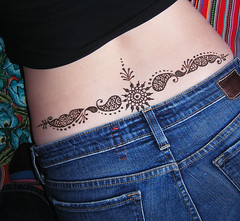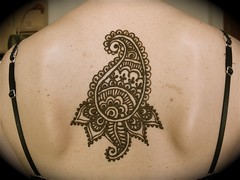 The most beautiful designs add grace to a bride's hands. Here are some of the most intricate designs I have seen.
The most beautiful designs add grace to a bride's hands. Here are some of the most intricate designs I have seen. Asian weddings are busy times for brides. The household of the bride is more busy, lively and full of action than any other time. The bride may have Mahdi, Sangeet as well as the wedding day reception, and apart from these few other family traditions such as treats from uncles and family, the groom will also be waiting for his Waleema, as well as the wedding reception day.
The event may start a week earlier than the big day, but the preparation and arrangements start month in advance. The Mehdi, as we call it, or henna night, is not an easy task. An expert will be appointed for the task. It will start in the morning and may take up to four hours for the job to be completed. Further to that two hours will be needed for drying time, which means the bride will have to sit in one position for hours, and then walk around for another two, with their hands in the air and touching nothing.
Once the henna is on the hands and feet then someone will have to feed the bride and help her on other issues. She also must not shake hands with anybody, which can be a real nightmare, but it is very enjoyable too as Medhi is a tradition of Asia. It is not faith related - Muslims and Hindus and almost all Asian faiths put on Mehdi as brides.
Mehdi colours can stay on the hands for up to a week. Mehdi designs are very traditional. In some parts of India, Mehdi is so popular that now it has it's own night. Many ladies will gather and sing traditional Mehdi songs. This is a female only night, and lots of dancing will also take place.

Add to del.icio.us
Stumble This





























 Henna, also known as Heena, is a form of body art that has existed since ancient times. Mehndi (or Henna) is the application of henna as a temporary form of skin decoration, in countries like Egypt, Iran, Pakistan, Syria, Morocco, Yemen, and Somaliland. It is typically employed for special occasions, particularly weddings. It is usually drawn on the hands and feet, where the color will be darkest.
Henna, also known as Heena, is a form of body art that has existed since ancient times. Mehndi (or Henna) is the application of henna as a temporary form of skin decoration, in countries like Egypt, Iran, Pakistan, Syria, Morocco, Yemen, and Somaliland. It is typically employed for special occasions, particularly weddings. It is usually drawn on the hands and feet, where the color will be darkest. Henna is a flowering plant, the sole species in the genus Lawsonia in the family Lythraceae. It is native to tropical and subtropical regions of Africa, southern Asia, and northern Australasia in semi-arid zones. Henna is a tall shrub or small tree, 2–6 m high.
Henna is a flowering plant, the sole species in the genus Lawsonia in the family Lythraceae. It is native to tropical and subtropical regions of Africa, southern Asia, and northern Australasia in semi-arid zones. Henna is a tall shrub or small tree, 2–6 m high. Henna, produces a red-orange dye molecule called lawsone. This molecule has an affinity for bonding with protein, and thus has been used to dye skin, hair, fingernails, leather, silk and wool. It is usually drawn on the hands and feet, where the color will be darkest because the skin contains higher levels of keratin which binds permanently to lawsone, the colorant of henna.
Henna, produces a red-orange dye molecule called lawsone. This molecule has an affinity for bonding with protein, and thus has been used to dye skin, hair, fingernails, leather, silk and wool. It is usually drawn on the hands and feet, where the color will be darkest because the skin contains higher levels of keratin which binds permanently to lawsone, the colorant of henna.  Henna has been used to adorn young women’s bodies as part of social and holiday celebrations since the late Bronze Age in the eastern Mediterranean. Henna was regarded as having “Barakah”, blessings, and was applied for luck as well as joy and beauty. Brides typically had the most henna, and the most complex patterns, to support their greatest joy, and wishes for luck. Some bridal traditions were very complex, such as those in Yemen, where the Jewish bridal henna process took four or five days to complete, with multiple applications and resist work.
Henna has been used to adorn young women’s bodies as part of social and holiday celebrations since the late Bronze Age in the eastern Mediterranean. Henna was regarded as having “Barakah”, blessings, and was applied for luck as well as joy and beauty. Brides typically had the most henna, and the most complex patterns, to support their greatest joy, and wishes for luck. Some bridal traditions were very complex, such as those in Yemen, where the Jewish bridal henna process took four or five days to complete, with multiple applications and resist work. Henna painting has become very popular as a form of temporary tattoo and is liked by a lot. The best aspect of henna is that it is totally natural, made from a plant plant whose leaves are first dried and then crushed to make a fine powder. While applying, the powder is mixed with water. This makes henna totally safe to use. Along with that, its application is totally painless and the effect is temporary. You can use henna to get tattoos, without worrying about pain or infection. In case you are not satisfied with a particular tattoo, just wait for a few days. Its color will soon wash off and you can easily go for another design.
Henna painting has become very popular as a form of temporary tattoo and is liked by a lot. The best aspect of henna is that it is totally natural, made from a plant plant whose leaves are first dried and then crushed to make a fine powder. While applying, the powder is mixed with water. This makes henna totally safe to use. Along with that, its application is totally painless and the effect is temporary. You can use henna to get tattoos, without worrying about pain or infection. In case you are not satisfied with a particular tattoo, just wait for a few days. Its color will soon wash off and you can easily go for another design.  Though there are no set patterns or designs for Henna, there are some popular designs that have been followed since ages. One of the most popular designs is a paisley that is often filled with a checkerboard pattern. Another popular pattern is a lovely peacock, with the sharp and curved beak and the corona on the head. Floral patterns are quite popular as well.
Though there are no set patterns or designs for Henna, there are some popular designs that have been followed since ages. One of the most popular designs is a paisley that is often filled with a checkerboard pattern. Another popular pattern is a lovely peacock, with the sharp and curved beak and the corona on the head. Floral patterns are quite popular as well. 













